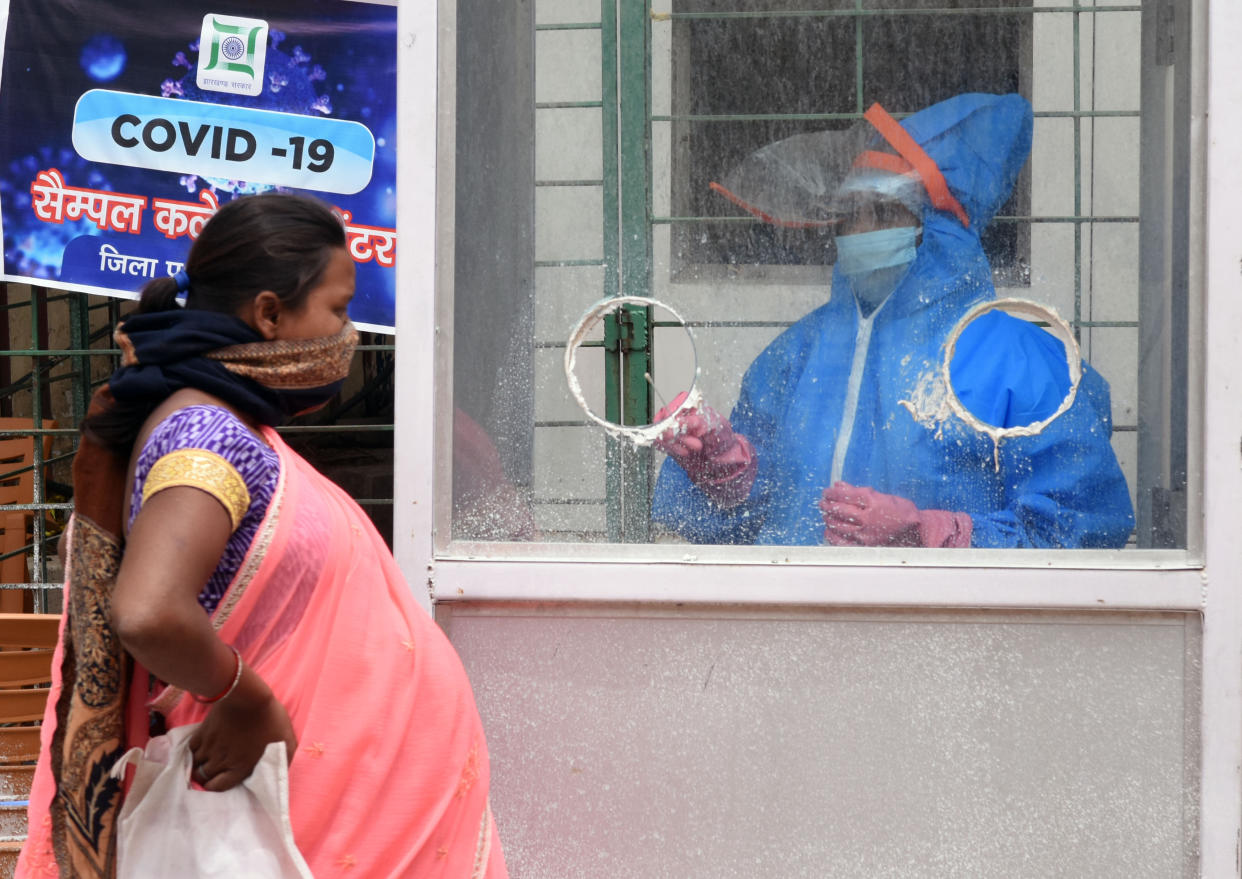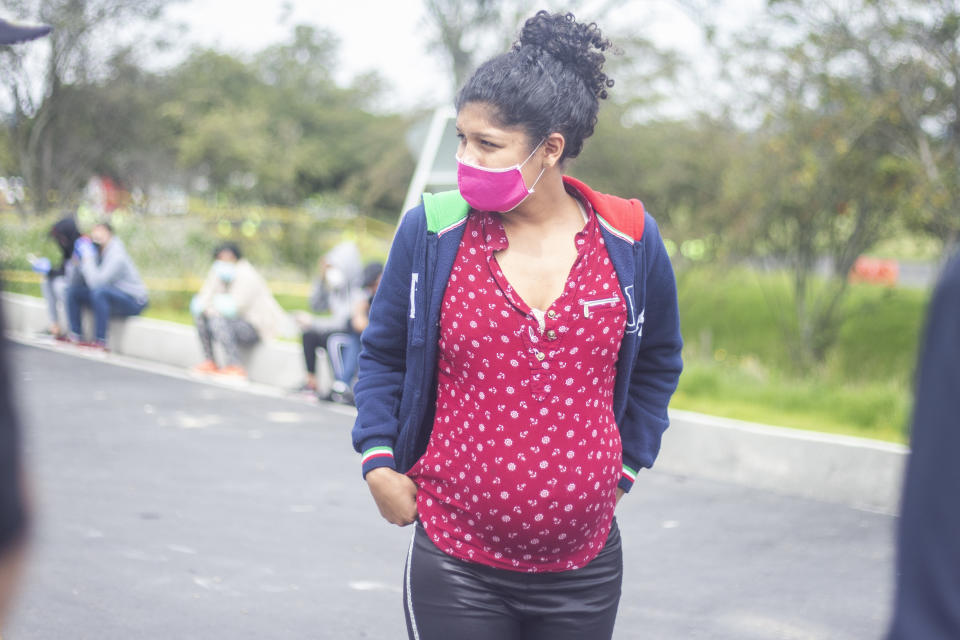Coronavirus: BAME women make up over half of expectant mothers in hospital with COVID-19

More than half of pregnant women in hospital with coronavirus complications in the UK are from a black, Asian or minority ethnic (BAME) background, research suggests.
The risk of the infection among expectant mothers is unclear, with studies throwing up mixed results.
More than half (56%) were from a BAME group.
The scientists expressed their concern, with a report previously revealing over a third (34%) of more than 4,800 patients critically-ill with the coronavirus identified as black, Asian or minority ethnic.
This is despite the 2011 census revealing only 14% of people in England and Wales are from ethnic minority backgrounds, the BBC reported.
Early research suggests the coronavirus is mild in four out of five cases, however, it can trigger a respiratory disease called COVID-19.

BAME risk needs ‘urgent investigation’
With the coronavirus emerging at the end of 2019, no one can say for sure how it may impact mothers-to-be.
Erring on the side of caution, expecting women have been urged to be particularly careful, with infections and pregnancy “not a good combination in general”.
Scientists from Midwestern University in Arizona previously analysed the research that has been carried out so far, concluding that while they cannot rule out newborns being infected in the womb, trials have repeatedly produced “no conclusive evidence” to back this up.
To investigate further, the Oxford team looked at the UK Obstetric Surveillance System for pregnant women admitted to obstetric units throughout the country with the coronavirus.
Results – published in The BMJ – revealed most of the women had good outcomes, with transmission of the infection to newborns “uncommon”.
The scientists noted, however, the high proportion of women from BAME groups “needs urgent investigation and explanation.”
Of the 56% of participants from a BAME background, a quarter (25%) were Asian and just over one in five (22%) were black.
Gill Walton, chief executive of the Royal College of Midwives, said: “Clear and urgent direction and leadership is needed from the government to tackle this issue.
“Even before the pandemic, women from black, Asian or ethnic minority backgrounds were more likely to die in and around their pregnancy. This crisis has exacerbated this, putting women at risk.
“The system is failing them and that has got to change quickly, because they matter, their lives matter and they deserve the best and safest care”.
The results also showed seven in 10 (70%) of the women overall were overweight or obese.
Carrying dangerous amounts of weight has been identified as one of the main risk factors for dying with the coronavirus.
Two in five (40%) of the participants were 35 or over, while a third had a pre-existing health condition.
One in 10 (10%) needed respiratory support in a critical care unit, while five (1%) died, either from coronavirus complications or another cause.
Twelve (5%) of the babies tested positive for the coronavirus, six within 12 hours of birth.
Speaking of a previous study, Professor Andrew Whitelaw from the University of Bristol wondered whether babies infected soon after delivery caught it from “their mother’s fingers”.

Why may BAME communities be more at risk of COVID-19?
The vast majority of deaths worldwide are occurring in the elderly or already ill.
One explanation could be that people from BAME backgrounds are more at risk of underlying health issues.
“Americans of African ancestry are much more likely to be overweight, obese or indeed morbidly obese than Caucasians”, Dr Dyan Sellayah from the University of Reading previously said.
“This may be because as your infection progresses and the virus infects more and more cells, the demand for oxygen in the tissues is much higher for an obese individual than it is for a lean individual.
“Eventually the obese body becomes overwhelmed by the lack of oxygen getting to the major organs.”
Obesity may also trigger a “dysfunctional immune system”, causing it to release excessive amounts of immune-fighting proteins that lead to hyper-inflammation.
“It is likely the immune response to the virus is therefore ineffective in obese individuals, which may explain why people from BAME backgrounds, who have higher incidence of obesity, are vulnerable to the virus,” said Dr Sellayah.
Obesity also makes individuals more prone to underlying health conditions, like type 2 diabetes and high blood pressure.
While this may come down to lifestyle, research suggests certain ethnicities are more likely to develop different co-morbidities.
“Irrespective of body weight status, some genetic mutations that predispose to heart disease have been shown to be more prevalent in African Americans than Caucasians,” said Dr Sellayah.
Although unrelated to the coronavirus, another example is prostate cancer, which is more common among men of African-Caribbean and African descent than Asian males.
Socio-economic factors may also make BAME communities more at risk.
“The demographic evidence is suggesting ethnic minorities live in larger family units, and potentially have professional and family lifestyles which make it harder to self-isolate or follow social distancing guidelines”, said Dr Sellayah.
For example, they may be more dependent on public transport, he added.
Data from the Office for National Statistics (ONS) revealed the most deprived areas of England had more than twice as many coronavirus-related deaths per 100,000 people as the most affluent regions between 1 March and 17 April.
“On average, deprived populations have a higher proportion of minority ethnic members,” Professor Noel McCarthy from Warwick Medical School previously said.
The ONS data was not broken down according to ethnicity.
Professor Gurch Randhawa from the University of Bedfordshire has argued the government “failed to appreciate the UK’s diverse population” when it imposed the lockdown.
“As part of the lockdown strategy the government advised that places of worship close”, he said.
“The BAME community is on average more religious and religious centres play a much greater role in alleviating food poverty.”
Non-urgent GP appointments have also largely switched to “video and phone consultations”.
“The patients least able to adapt to these new methods are likely to be poorer than average and disproportionately BAME,” said Professor Randhawa.
Dr Sellayah stressed it is “early days” in our understanding of the coronavirus and nothing can be “conclusively stated”.
Nevertheless, “evidence suggests society-economic and genetic factors are responsible” for BAME communities being disproportionately affected, he added.

What is the coronavirus?
The coronavirus is one of seven strains of a virus class that are known to infect humans.
Others cause everything from the common cold to severe acute respiratory syndrome (Sars), which killed 774 people during its 2002/3 outbreak.
Since the coronavirus outbreak was identified at the end of 2019, more than 7 million cases have been confirmed worldwide, according to Johns Hopkins University.
Of these cases, over 3.1 million are known to have recovered.
Globally, the death toll has exceeded 409,800.
The coronavirus mainly spreads face to face via infected droplets expelled in a cough or sneeze.
There is also evidence it can spread in faeces and survive on surfaces.
Symptoms include fever, cough and a loss of taste or smell.
The coronavirus has no “set” treatment, with most patients naturally fighting off the infection.
Those requiring hospitalisation are given “supportive care”, like ventilation, while their immune system gets to work.
Officials urge people ward off infection by washing their hands regularly and maintaining social distancing.
Coronavirus: what happened today
Click here to sign up to the latest news, advice and information with our daily Catch-up newsletter
Read more about COVID-19
How to get a coronavirus test if you have symptoms
How easing of lockdown rules affects you
In pictures: How UK school classrooms could look in new normal
How public transport could look after lockdown
How our public spaces will change in the future
Help and advice
Read the full list of official FAQs here
10 tips from the NHS to help deal with anxiety
What to do if you think you have symptoms
How to get help if you've been furloughed

 Yahoo News
Yahoo News 

